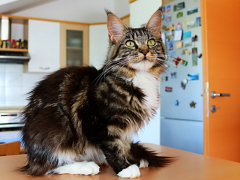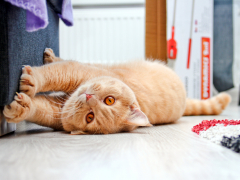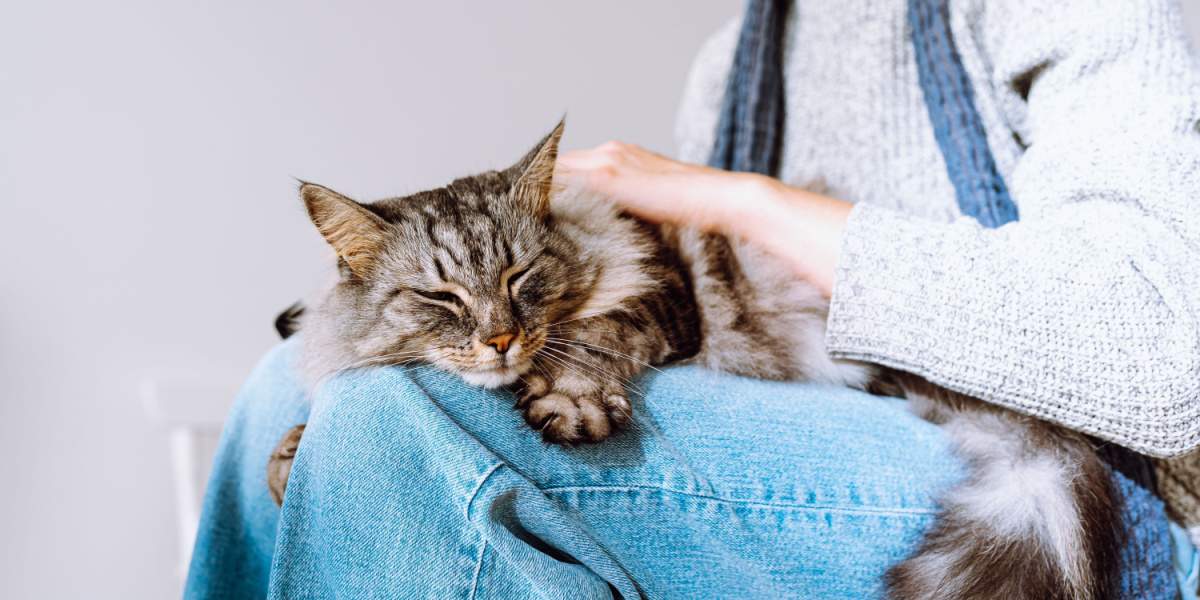
Low blood potassium (hypokalemia) in cats is a common issue. It is caused by a number of specific conditions. This article explains the details of the issue. We will explore what low blood potassium in cats is, how to help cats with this issue, and some frequently asked questions.
Quick Overview: Hypokalemia in Cats





What Is Low Hypokalemia in Cats?
The normal blood potassium of a cat should be 3.5 and 5.5 mEq/L (3.5 – 5.5mmol/L). Hypokalemia means that the blood potassium is lower than these levels. Hyperkalemia, or high blood potassium, would mean that the blood potassium is higher than these levels.
Where Do Cats Get Potassium From?
Cats get potassium from their food. Potassium is a normal ingredient in many foodstuffs, and a shortage due to an inadequate diet is rarely seen in a cat that has a normal appetite. Natural sources include meat, poultry, and fish, meaning that any complete cat food contains plenty of potassium.
Where in the Body Is Potassium Stored?
Most of the potassium in the body stays inside all living cells. However, there’s a continual steady but lower amount of potassium in the bloodstream and in the fluid around the cells. The walls of cells have an active pumping mechanism that ensures that the correct level of potassium is maintained inside and outside cells.
The gradient of potassium concentration between the two “compartments” (intracellular and extracellular) is key to normal functioning of some cells. This is particularly important for muscle cells. If potassium levels go wrong, the function of the muscle cells is badly affected.
How Are Blood Potassium Levels Maintained at the Correct Level?
Hormones in the body, primarily aldosterone produced by the adrenal glands, ensure that the blood potassium remains within normal limits. Potassium is excreted from the body in the urine, and aldosterone governs the rate at which this happens.
Normal potassium levels are critically important for the normal function of a range of different aspects of the body, In particular, it is essential for normal muscle function (including the heart muscle). Disorders of potassium levels in cats are common, but because the signs are sometimes vague and general, they may only be diagnosed when blood samples are taken to measure potassium levels.
Symptoms of Hypokalemia in Cats
Muscle weakness, technically caused by “polymyopathy” (meaning “disease of many muscles”) is the most noticeable clinical sign seen in hypokalemic cats. It is caused by the inability of muscle cells to function normally due to the imbalance of potassium inside and outside the cells. The most visible sign of muscle weakness, is drooping of the neck (ventroflexion). You may also notice other signs that your cat is weaker than usual.
These signs may be more vague and less specific, such as weight loss, generalized weakness, lameness, and dullness. The muscles may be painful on palpation, and affected cats may also have difficulty breathing due to the effect on the respiratory muscles. Increased thirst and urination (polyuria polydipsia – PUPD) are also common symptoms.
In mild cases where the potassium levels are just marginally low, there may be no outwardly discernible signs that something is amiss, but there is still a risk that the low blood potassium has a significant effect, causing a reduced appetite and affecting kidney function. This is why it is worth monitoring blood potassium levels in cats that may be prone to reduced levels.
Causes of Hypokalemia in Cats
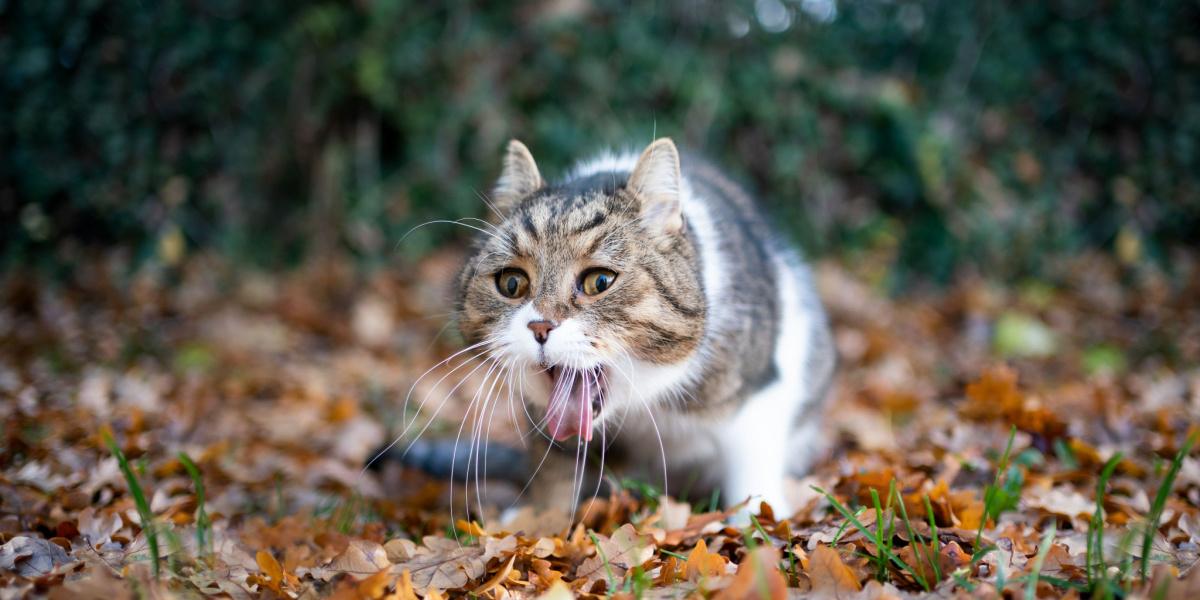
There are a number of underlying causes of hypokalemia in cats that require a veterinary diagnosis.
The most common causes of hypokalemia in cats are:
- Chronic kidney disease (CKD) – Also known as Chronic Renal Failure (CRF), or just kidney failure, it is the most common cause of hypokalaemia in cats. Affected cats lose large amounts of potassium in their urine, for reasons that are not fully understood. As a consequence, the blood potassium levels fall.
- Gastrointestinal upsets – Vomiting and diarrhea, caused by a number of different reasons, cause low potassium levels because of the direct loss of potassium from the body in the waste.
- Primary aldosteronism – In this rare condition, a tumor on the adrenal gland produces abnormally high levels of the hormone aldosterone, resulting in excessive excretion of potassium in the urine.
- Hereditary hypokalemia – This is commonly seen in Burmese cats, as well as in other related breeds of cats (see list below). The mechanism by which this happens is still unknown but there is now a better understanding of the genes involved. It is possible to screen potential breeding cats to ensure that they are not carriers.
- Other diseases – Less commonly, low blood potassium is seen when cats have other diseases (such as hyperthyroidism) or as a side effect of medication (e.g. diuretics or other drugs being given for heart disease)
- A mild form of hypokalemia – This may be seen if a cat is inappetent, eating less than usual, and especially if they have stopped eating completely, i.e. suffering from anorexia.
Diagnosis of Hypokalemia
If your veterinarian suspects that your cat may have low blood potassium, the following steps may be taken.
1. Detailed History Taking
Your vet will discuss every aspect of your cat’s life and health care. There are other causes of the same types of signs as low blood potassium, and this history will help to differentiate the various possible causes.
2. Physical Examination
Your veterinarian will check your cat over carefully, noting any physical signs of illness, and ruling out other causes of the signs that are being shown (e.g. heart disease, arthritis, spinal disease, etc).
3. Blood Tests
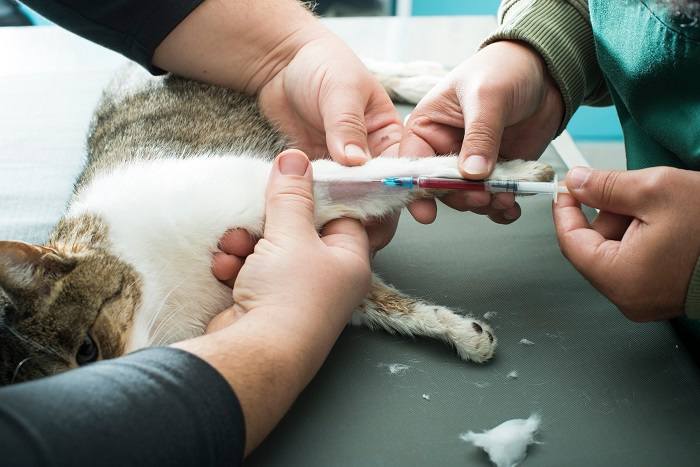
Blood samples are key to giving the vet an idea of potassium levels in your cat’s blood.
A specific diagnosis of hypokalemia is made by measuring serum potassium concentration in a blood sample. Your veterinarian may measure all of the electrolytes in a blood sample, including the blood potassium level, as well as sodium and calcium measurements.
It’s likely that they will carry out other blood work, including the usual panel of diagnostic tests (such as glucose), including hematology (complete blood count or CBC) and biochemistry profiles (including renal parameters and various enzymes), to check that there is no other underlying cause making your cat ill.
The blood tests may also show anemia, also linked to chronic renal failure, as well as raised creatine kinase enzyme, linked to muscle dysfunction.
Tests such as measuring thyroid hormone levels are often carried out in elderly cats to rule out this common disease.
5. Other Tests
Radiography (x-rays), ultrasound, and electrocardiography (ECG) are all tools that your vet may choose to use to assess your cat’s cardiac function. A urinalysis is also common, given the link between chronic renal failure and hypokalemia.
Your veterinarian will advise you on whether or not such detailed investigations are needed.
For the hereditary version of hypokalemia, International Cat Care has established a register for breeders with cats that have been tested for the WNK-4 gene defect. This is important for Burmese and related cat breeds such as Asian, Australia Mist, Bombay, Burmilla, Cornish Rex, Devon Rex, Singapura, Sphynx, Tiffanie, and Tonkinese cats.
How Much Does It Cost To Treat a Cat With Low Blood Potassium?
It’s very likely that your cat may have other problems alon with low blood potassium. It is impossible to estimate the treatment cost, as there are so many possible factors going on in the background of individual cases. You should ask your veterinarian for a detailed estimate before agreeing to proceed with any treatment.
Treatment for Low Blood Potassium
Immediate treatment of severe cases involves an injection of potassium in intravenous fluids, usually in the form of potassium gluconate added to fluid therapy. Care must be taken to calculate the amount to be given. If blood potassium levels go too high, this can be life-threatening. causing cardiac arrhythmias.
Longer-term treatment for low blood potassium is simple. Give your cat oral potassium supplementation using a dietary potassium supplement. Your veterinarian will recommend a product and advise on the correct dosage.
Importantly, a cat with hypokalemia often also needs treatment for concurrent conditions such as chronic renal failure, gastrointestinal upsets, and others.
Monitoring and Prognosis
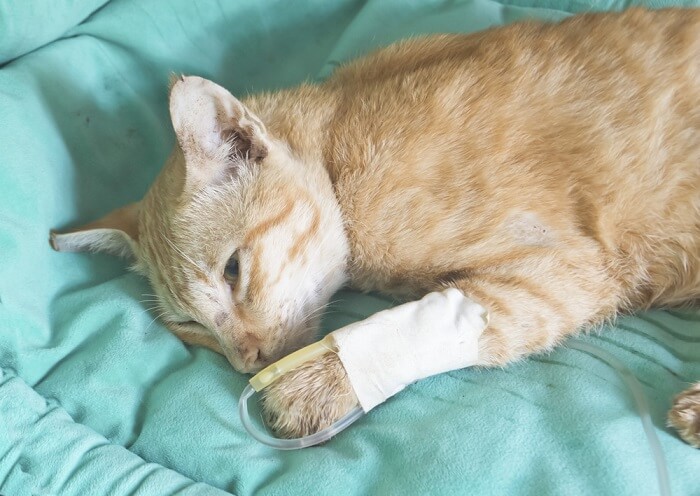
Blood potassium should be monitored regularly until the hypokalemia has fully resolved for acute cases. For long-term cases, regular blood samples should be taken to ensure that potassium levels remain within the normal range.
Home Remedies
There are no good home remedies for Hypokalemia other than ensuring that your cat eats a quality, balanced, complete diet and supplements prescribed by your vet.
Final Thoughts
Hypokalemia is a serious issue that needs to be identified and treated effectively. This is not a condition that cannot be diagnosed or treated without detailed professional veterinary supervision and monitoring. With proper care and treatment, the prognosis for cats with hypokalemia is thankfully good.
Also Read: 10 Subtle Signs Your Cat May Be Sick
Frequently Asked Questions
What can cause hypokalemia in cats?
The most common cause is ongoing disease, in particular chronic renal failure, although there are other possible underlying causes.
What are the symptoms of hypokalemia in cats?
The most obvious sign is muscle weakness, with drooping of the neck (ventroflexion), generalized weakness, lameness, and dullness, with the cat unwilling to move around. The muscles may be painful on palpation, and affected cats may also have difficulty breathing due to the effect on the respiratory muscles. Increased thirst and urination (polyuria polydipsia – PUPD) are also common symptoms.
How can I raise my cat's blood potassium?
Care needs to be taken when supplementing cats with low potassium, as there are risks if too much potassium is given. It’s best to work closely with your veterinarian when deciding how to give extra potassium.




